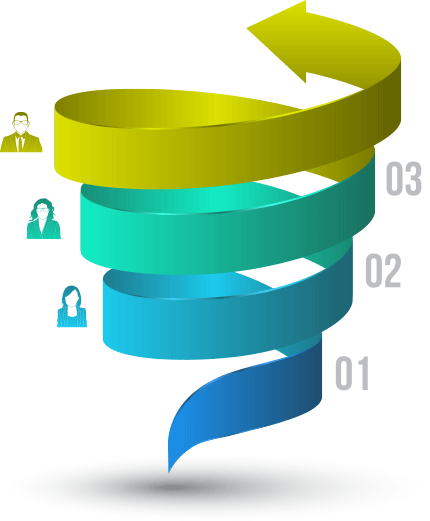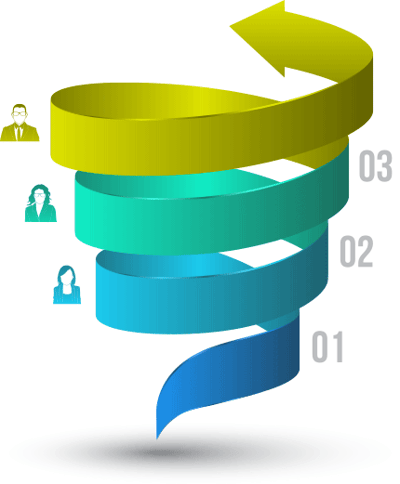3 Main Components of an Effective Succession Plan

 A fully mature Succession Planning process will typically have three major components, all of which leverage the same basic principles, but address different needs in the organization.
A fully mature Succession Planning process will typically have three major components, all of which leverage the same basic principles, but address different needs in the organization.
1. Corporate Critical Roles
2. Function Critical Roles
3. Future Leaders
Corporate Critical Roles
Corporate Critical Roles are typically the CEO and his/her direct reports. If the organization has a Board of Directors, the CEO probably has a fiduciary responsibility to the Board that there is a plan in place to assure continuity of leadership in these roles. While it is generally structured rather clearly at this level, the key for succession planning is to address a plan for the roles, not the positions as they are configured today. At this stage of the process, the concern is about what roles are critical to have on the executive team, not about individuals and their capabilities. Here is an example in way of explanation.
Once the roles are identified, the next step is to define how to identify Ready Now or Ready When Needed candidates, whether from internal selection or external search. This consists of describing what experiences a successor should reasonably have to quickly become effective in the new role, as well as the competencies that differentiate this role from others at this level. The “hit rate” on these experiences and competencies will be a critical part of the candidate evaluation and qualification process. Most succession plans that are ineffective (created but not used, allowed to get out of date, etc.) fail to do the candid discussion needed to get alignment across the leadership team on what a Ready candidate really looks like. Doing this up front provides both an agreed to selection specification and a development blueprint.
Start with defining the needed experiences.
For each of the roles for which Succession Plans are to be developed, either facilitate a discussion with appropriate subject matter experts (SME’s), then compile a recommended list for approval. What you want from them is both a description of the sorts of experiences you would want a candidate to have, and examples of the sorts of assignments the SME’s agree would give them those experiences.
Once the slates of candidates are surfaced, the names and demographic information can be entered into a candidate evaluation spreadsheet to finish the set-up for evaluation. What follows is the executive team sitting together in a facilitated discussion to evaluate and agree on the extent to which the candidates meet the criteria that have been agreed to. In the end, what the executive team wants as deliverables from the process are these:
- Identification of Ready When Needed successors for each position.
- Identification of candidates who need limited development investments (an additional assignment, work on a specific competency) in order to be Ready.
- Action Plans for addressing the development needs of these succession candidates.
- Identification of individuals who are not succession candidates, but are key players and should be considered for favorable compensation treatment.
These results can be readily summarized for sharing with the Board or easy access in the event a succession event takes place and the plan is needed.
Most of the better organizations commit to this process as an annual event – at least the nomination and review process. They also open the discussion each year with the question as to whether the list of Critical Roles has changed or needs additions. The good news is that pending major reorganization, the front-end work does not have to be redone very often.
Function Critical Roles
There are only two real differences between succession planning for Function Critical Roles and Corporate Critical Roles: where in the organization the process is driven from, and the definition of what a “critical role” is. In the case of Function Critical Roles, the process is driven by the Function Leader (CFO, COO, HR Director, etc.) who is the owner and is responsible to the CEO for the results. They will work with their HR consultants and site/geography leaders to define the critical roles, the required competencies and experiences, and ensure a pipeline of Ready or developing talent to fill critical roles as they come open.
The bigger difference is in the selection of what roles are critical. Unless you have little or no leadership talent pipeline in your organization, finding people to fill first line and even middle manager positions is relatively easy, and the actual differences in competency and experience requirements are minimal. Therefore, supervisor/manager roles are not necessarily critical. Critical roles that require the effort of succession planning need to meet the following criteria:
- The incumbent has (and the role requires) well established relationships with key customers, suppliers, or regulators. For example, the person has become a trusted partner with a business critical customer and it would take a long time to get to the same place with a new person.
- The incumbent possesses (and their role requires that they have) specific skills, knowledge or problem solving experience that takes years to acquire and is not easily found on the open market (internal or external). Examples would be trade secret information and expertise in manufacturing or research.
Future Leader Identification & Development
Because it reaches deeper into the organization to identify people with the potential to be future leaders, this is one of the later stages of the total process an organization should attempt. Here, the goal is to identify people early in their career, before they are likely to be Ready Now (or with one more assignment) successors for Corporate or Function Critical Roles. This is the process by which you build your talent pipeline, so that you have rich internal candidate pools to select from for succession planning in the future.
KEYS TO EFFECTIVENESS
There are three key questions to answer in order to run an effective Future Leader process:
- Who is a Future Leader and how do I select them?
- How many should I identify and develop?
- What development investments should we make?
Selection:
Numerous studies of top performers and leaders have shown that the most reliable predictors or markers of exceptional contribution and success are these:
- They learn new roles faster than their peers.
- They make a difference or create positive change in a role sooner than their peers. They are stronger in the competencies that mirror what their organization needs to be successful.
- Because they are more willing to take on new assignments and are successful in them faster, they assemble a stronger portfolio of experience than their peers with equivalent service.
In order to define what to select for, there are several approaches that can be taken.
First, you can review the critical competencies for your Corporate and Function Critical roles and identify the three to five competencies that turn up again and again as criteria for selecting successors. This “hit list” will give you a good idea which competencies you want these future leaders to be developed in and strongest in.
Second, you can use your Organization level competency model for what everyone needs to be strong in to drive the organization’s Vision and Strategy. If you do not have one, the ThinkWise Competency Modeler is the tool to use to create one.
Using your preferred combination of these sources of information on what competencies distinguish Future Leaders, you are ready to nominate, assess and evaluate candidates.
How Many?
The number of Future Leaders you identify should be based on the number of meaningful development opportunities you are realistically able to provide. The reality is that the most valuable development resources, job assignments, special projects, and perhaps relocations, are the most expensive and hard to orchestrate. Therefore, you should want to always make these investments based on the long term needs of the organization, not the convenience of a single department.
What Development Investments?
Research and practical experience shows that to develop the competencies and experience portfolios needed to be effective leaders in an organization, 70% of the useful development comes from on-the-job experiences, 20% from informal or self-directed learning, and 10% from formal learning/educational experiences.
Obviously, most of the attention and action planning around developing Future Leaders should revolve around managing their careers to make sure they get exposure to the roles and experiences you have defined as required to fill your Corporate and Function Critical roles.
Additionally, you will want to address retention of these identified individuals. Clearly, the opportunities you give them to grow and develop will play a big part in retention, but you will also want to be creative with recognition and compensation as well.
The size and scope of the talent management program an organization opts for is related to the size and complexity of that organization. Start small, at the top of the organization, with Corporate Critical Succession Planning and evolve to Function Critical Succession Planning, and finally Future Leader identification and development.
This process of “getting it right” at one level before tackling the next will take some time, but will assure that this sort of talent mindset becomes part of the culture.
To learn more about Succession Planning get the entire Succession Planning Process Overview report by clicking below.
